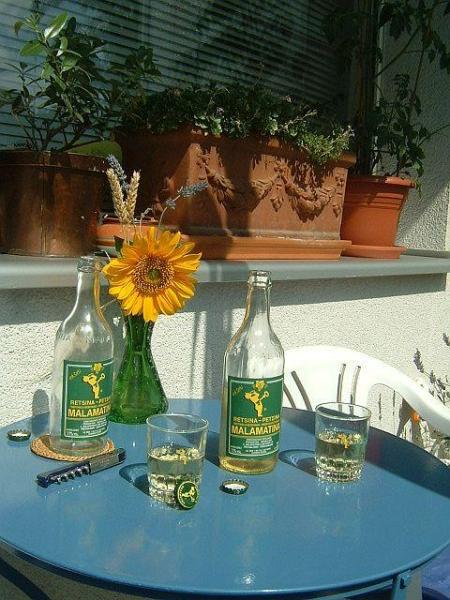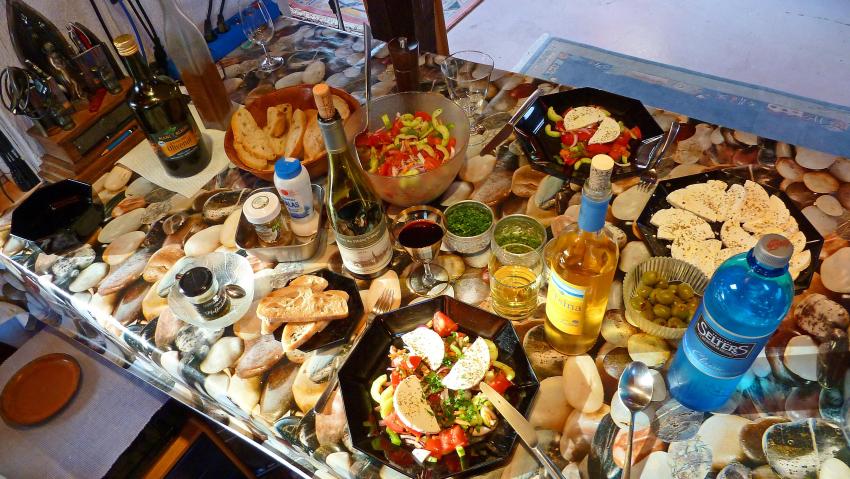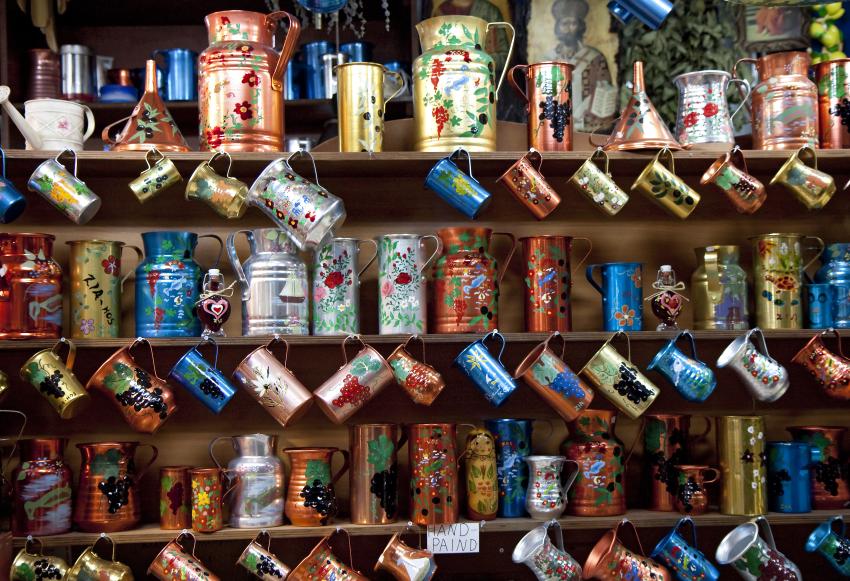- Read offline
- Access all content
- Build a list of your own favourites
- Search the contents with full-text search functionality
- ... and more!
retsína
ρετσίνα

Greece's love-it or hate-it resinated wine is made in Attica, Évia and Boeotia using Savatiano grapes, along with lesser amounts of Asýrtiko and Rodítis, and flavoured with the sap of the Aleppo pine. It's designated PDO (ΠΟΠ) in both Greece and Cyprus.
Retsina actually pairs well with many traditional Greek dishes (back in the 1970s and 80s, before olive oil became THE thing, tourists were advised to drink retsina, or Coca Cola, to make all that wicked olive oil easier to digest).

Retsina has to be drunk very cold, in glass tumblers, and is generally best from the barrel, ρετσίνα βαρελίσιο (retsína varelísio), served in chilled copper-anodized cans that help to keep it cold. Sadly this becoming harder and harder to find as many young people don't like it much.

There are good bottled brands, though, including Kourtáki and Malamatína, which claims to be the key to good digestion, or at least that must be what the label with a key in the gut of a guzzler must be trying to convey.
A Little Retsina History
In Roman times, resinated wines were widespread across the Mediterranean, as resin was used to seal the mouths of amphorae before they were shipped. As France didn't have the Aleppo pines and the right kind of resin, they began to make wooden barrels, which by the 3rd century AD took over as the go-to container for wine–except in the eastern Mediterranean, which didn't have the good French oak and where drinkers had developed a taste for resinated wines that lingers in Greece to this day.
Images by Eric Borda, Manfred&Barbara Aulbach, peng

